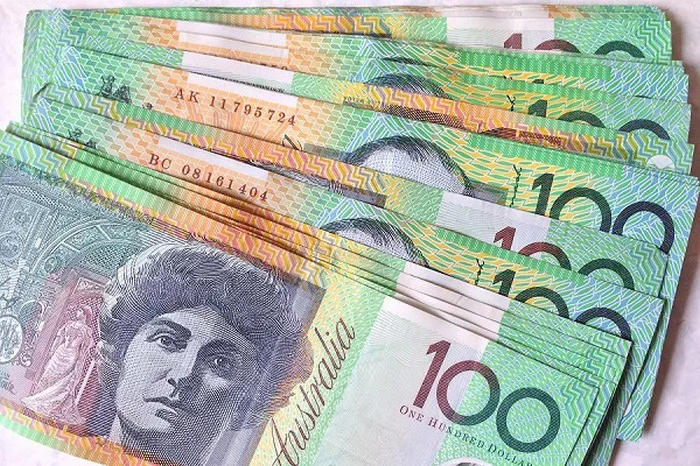The Australian dollar (AUD) stands as a beacon of stability and resilience within the global financial landscape. As one of the most traded currencies in the world, it holds a pivotal role in international trade and investment. In this article, we delve deep into the facets that shape the Australian dollar, examining its historical evolution, key drivers, current status, and future outlook.
Historical Evolution
The journey of the Australian dollar traces back to the early 20th century when Australia adopted the pound sterling as its official currency. However, in 1966, Australia made a significant shift by introducing its own decimal currency, replacing the pound with the Australian dollar. Since then, the currency has witnessed various fluctuations, influenced by both domestic and global economic factors.
Key Drivers
Several factors contribute to the dynamics of the Australian dollar:
Commodity Prices: Australia’s economy is heavily reliant on commodity exports, particularly minerals and agricultural products. Fluctuations in commodity prices, driven by global demand and supply dynamics, exert a significant influence on the Australian dollar. For instance, a surge in commodity prices often leads to an appreciation of the AUD, reflecting increased export revenues.
Interest Rates: The Reserve Bank of Australia (RBA) plays a crucial role in setting monetary policy and interest rates. Higher interest rates relative to other major economies attract foreign capital inflows, strengthening the Australian dollar. Conversely, lower interest rates may lead to a depreciation of the currency as investors seek higher yields elsewhere.
Global Economic Conditions: Being a small open economy, Australia is highly sensitive to global economic trends. Economic growth, inflation rates, and geopolitical events in major economies such as the United States, China, and the Eurozone have a profound impact on investor sentiment and currency movements.
Risk Sentiment: The Australian dollar is often perceived as a risk-sensitive currency due to its close correlation with global risk appetite. During times of uncertainty or market volatility, investors may flock to safe-haven assets, causing the AUD to depreciate. Conversely, improved market sentiment tends to bolster the currency.
Monetary Policy Outlook: Market expectations regarding future monetary policy decisions by the RBA can influence the Australian dollar. Signals of tightening or loosening monetary policy can lead to currency fluctuations as investors adjust their positions accordingly.
Current Status
As of now, the Australian dollar stands at [current exchange rate] against the US dollar, reflecting its resilience amidst a challenging global economic environment. Despite facing headwinds such as the COVID-19 pandemic and geopolitical tensions, the AUD has remained relatively stable, buoyed by several factors:
Robust Commodity Prices: The Australian dollar has benefited from surging commodity prices, particularly iron ore and gold, which are key exports for Australia. Strong demand from China, coupled with supply constraints, has propelled commodity prices to multi-year highs, providing support to the AUD.
Favorable Interest Rate Differentials: Despite the RBA’s decision to keep interest rates at historically low levels to support economic recovery, Australia’s interest rates remain higher compared to other major economies such as the United States, Japan, and the Eurozone. This interest rate differential has attracted capital inflows, bolstering the Australian dollar.
Resilient Economic Performance: Australia has demonstrated resilience in navigating the challenges posed by the COVID-19 pandemic. The country’s effective containment measures, coupled with fiscal stimulus packages, have supported economic activity and consumer confidence, contributing to the stability of the Australian dollar.
Diversified Trading Partners: Australia’s diverse trading partners, including China, the United States, Japan, and the European Union, mitigate the impact of regional economic fluctuations on the Australian dollar. This diversification enhances the currency’s stability and reduces its vulnerability to external shocks.
Future Outlook
Looking ahead, several factors are likely to shape the future trajectory of the Australian dollar:
Commodity Price Trends: The outlook for commodity prices, particularly iron ore and energy commodities, will continue to influence the Australian dollar. Any significant shifts in global demand, supply dynamics, or geopolitical developments could impact commodity prices and, consequently, the AUD.
Monetary Policy Decisions: The RBA’s monetary policy stance will be closely monitored by market participants for signals of future interest rate adjustments. Any divergence in monetary policy between the RBA and other central banks could lead to currency fluctuations.
GlobalEconomic Recovery: The pace and trajectory of the global economic recovery from the COVID-19 pandemic will play a crucial role in shaping investor sentiment and currency movements. Positive developments in key economies, coupled with continued fiscal and monetary support measures, could support the strength of the Australian dollar.
Geopolitical Risks: Geopolitical tensions and trade disputes can introduce uncertainty into the financial markets, impacting risk sentiment and currency valuations. Any escalation of geopolitical conflicts or trade tensions may lead to heightened volatility in the Australian dollar.
In conclusion, the Australian dollar epitomizes resilience and adaptability in the face of dynamic global economic forces. Its evolution, driven by a myriad of factors, underscores its importance as a key player in the international financial system. As Australia continues to navigate the complexities of the global economy, the Australian dollar is poised to maintain its prominence on the world stage, guided by sound economic fundamentals and prudent policy measures.


